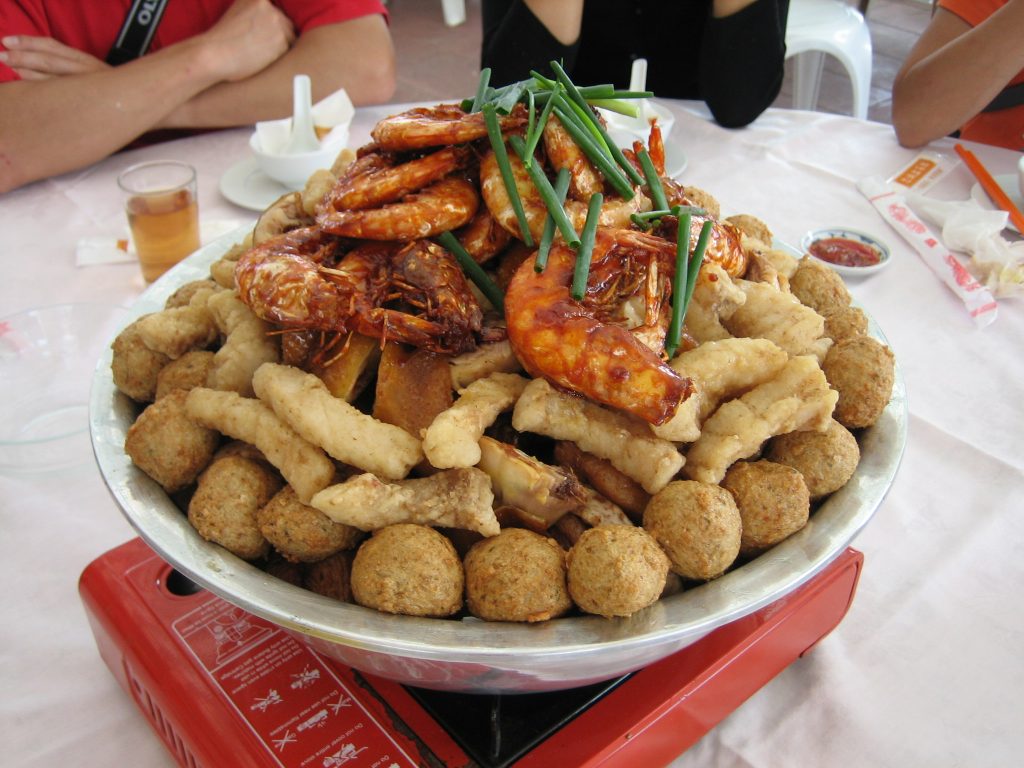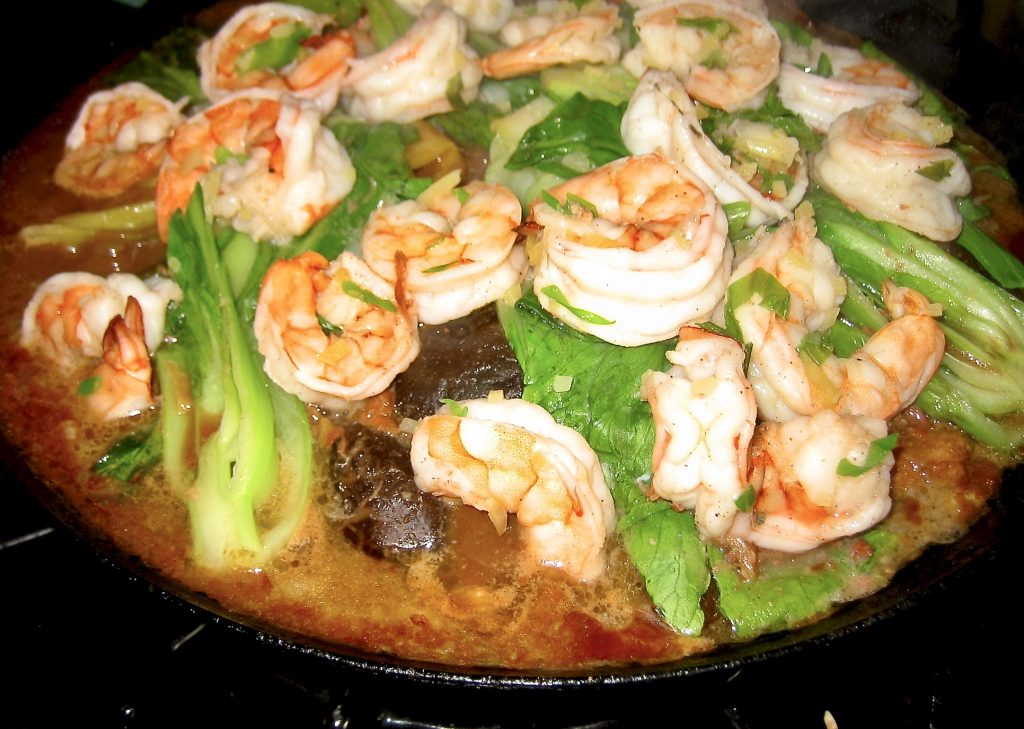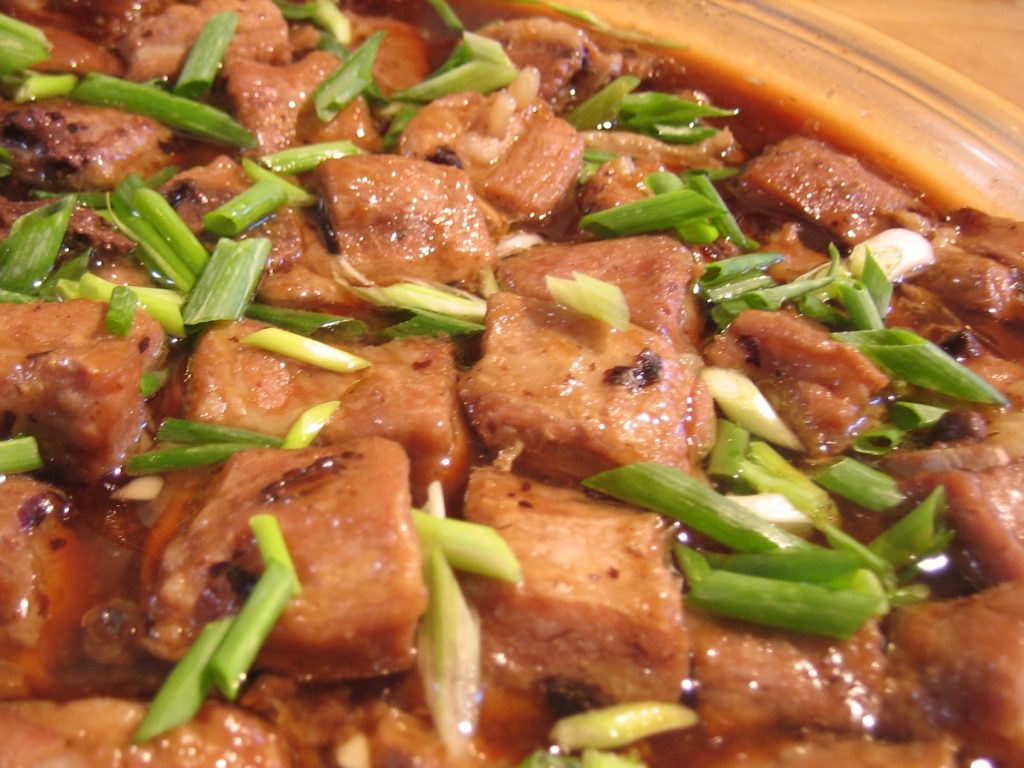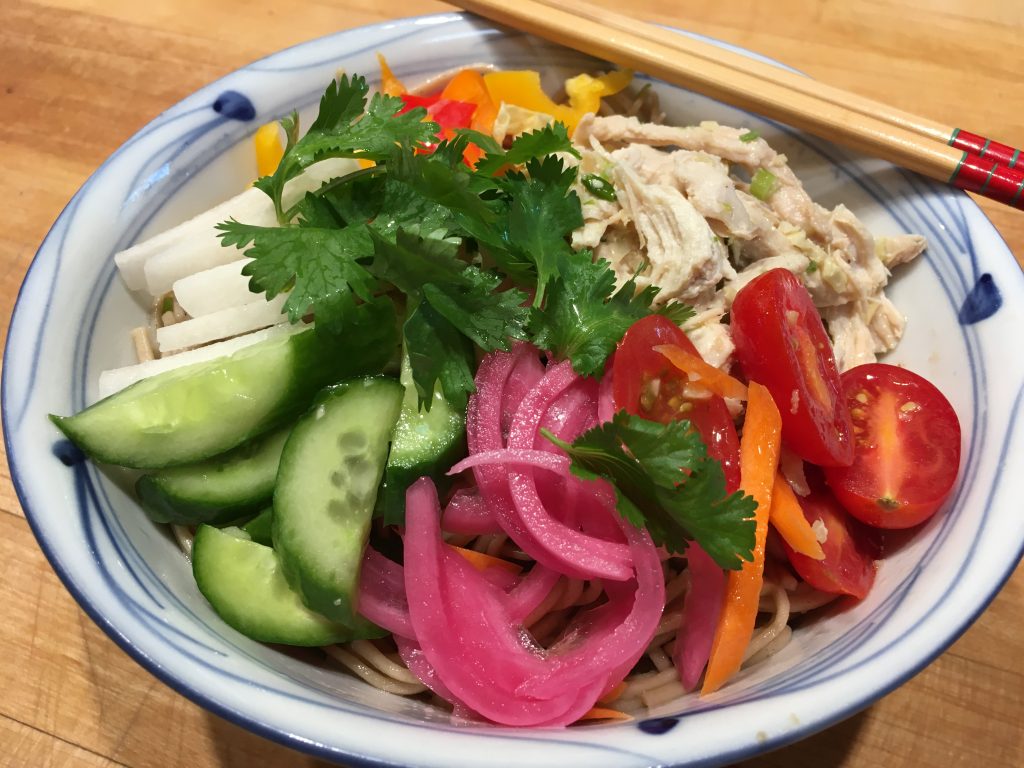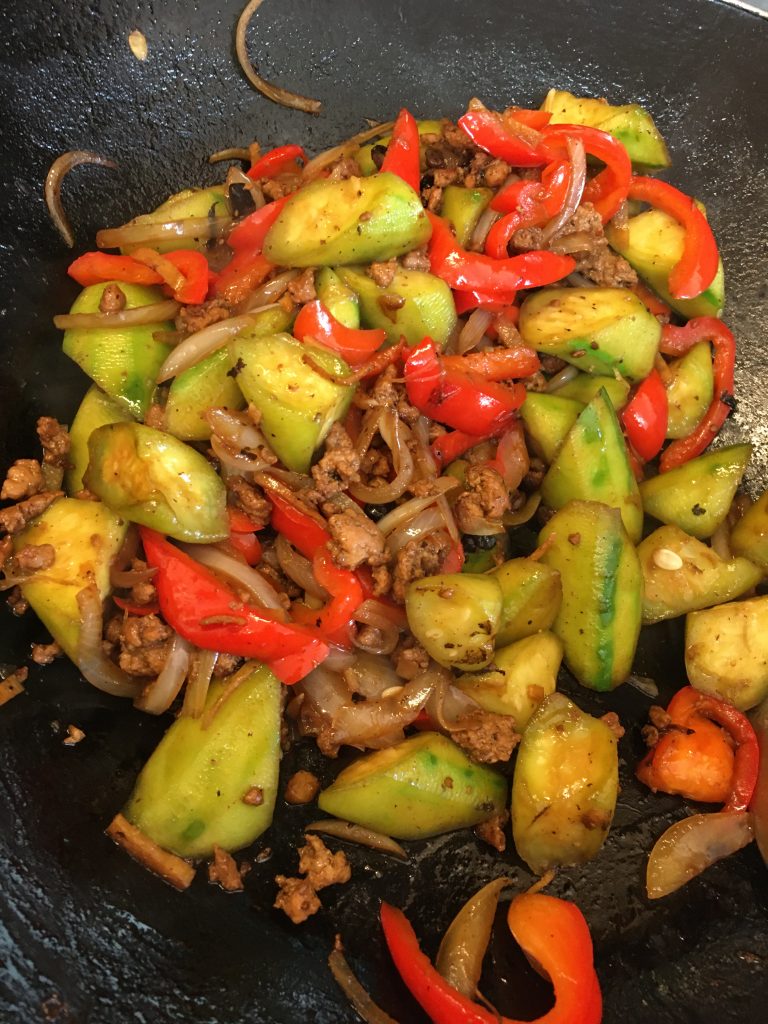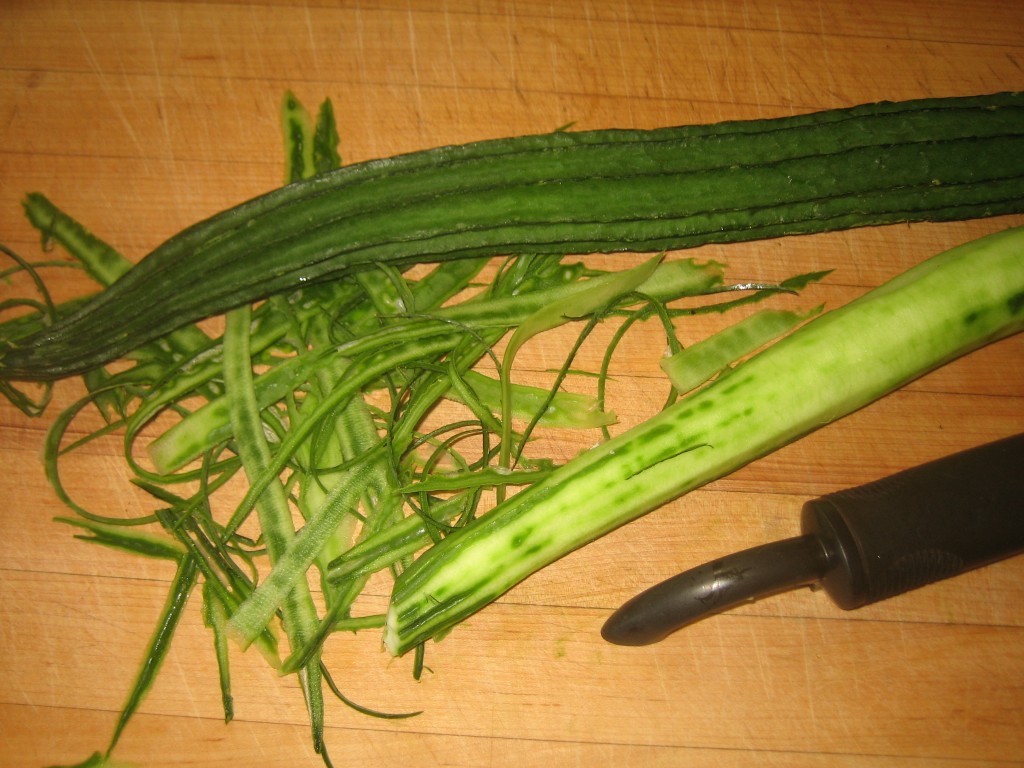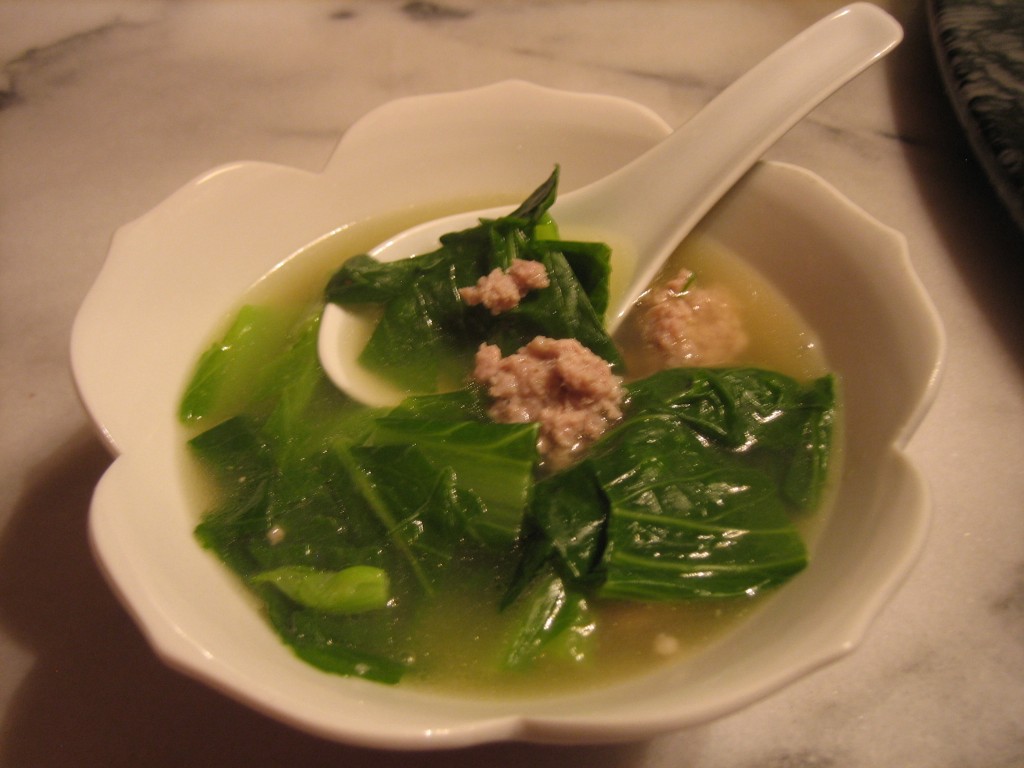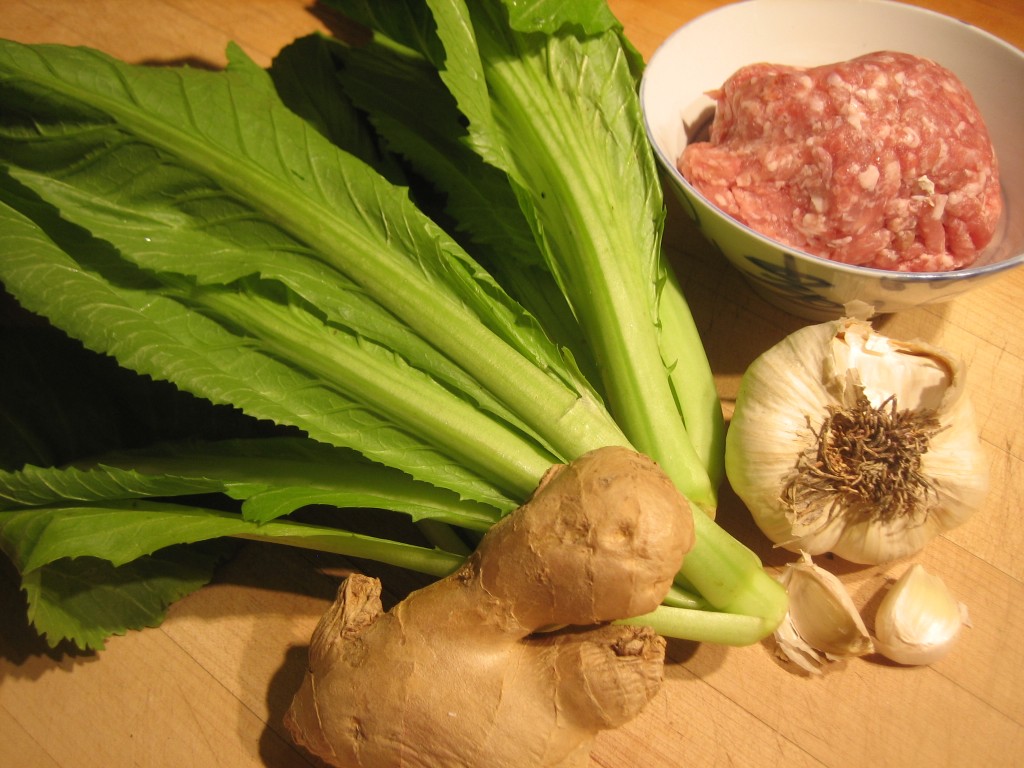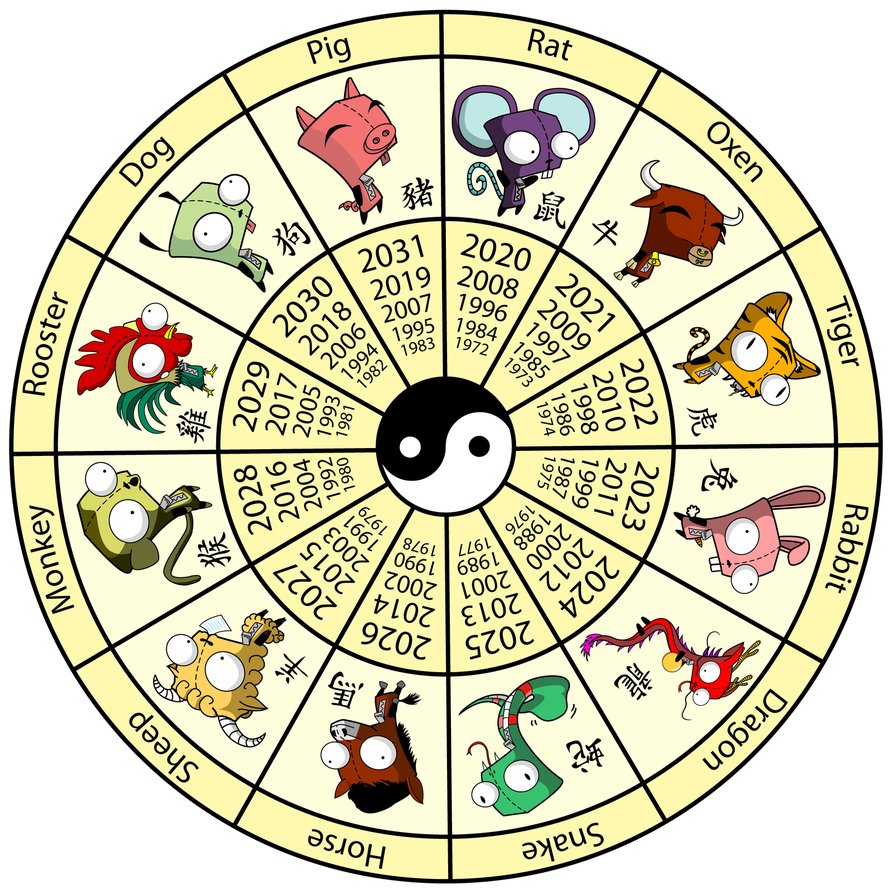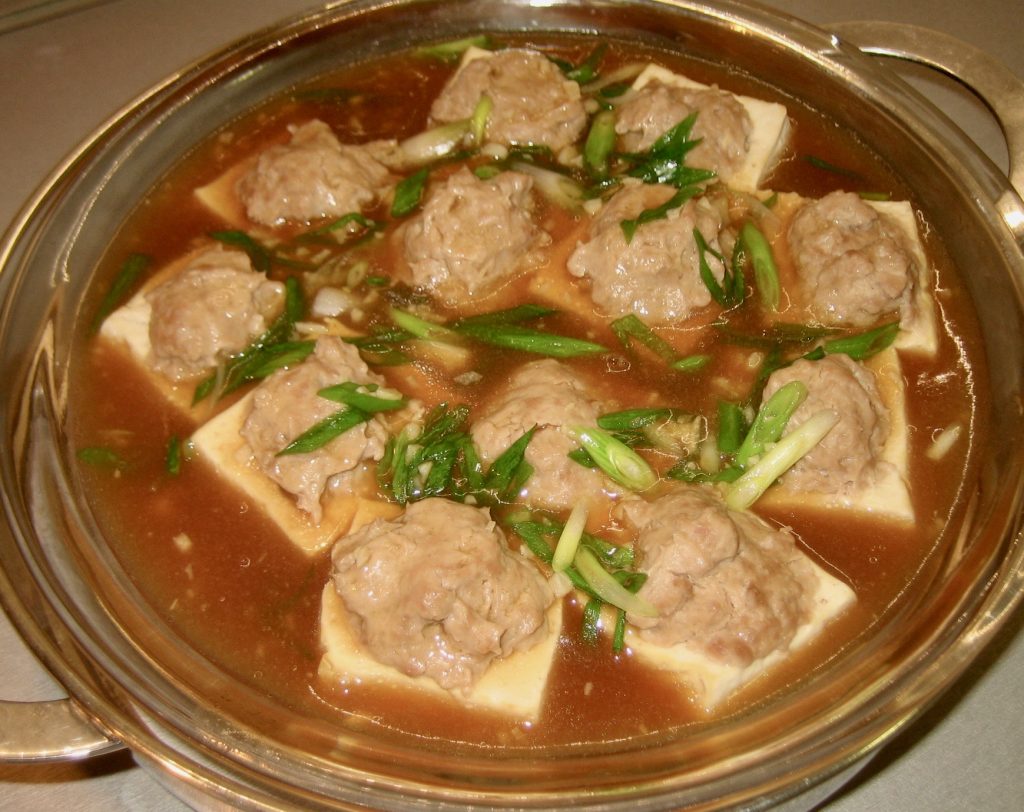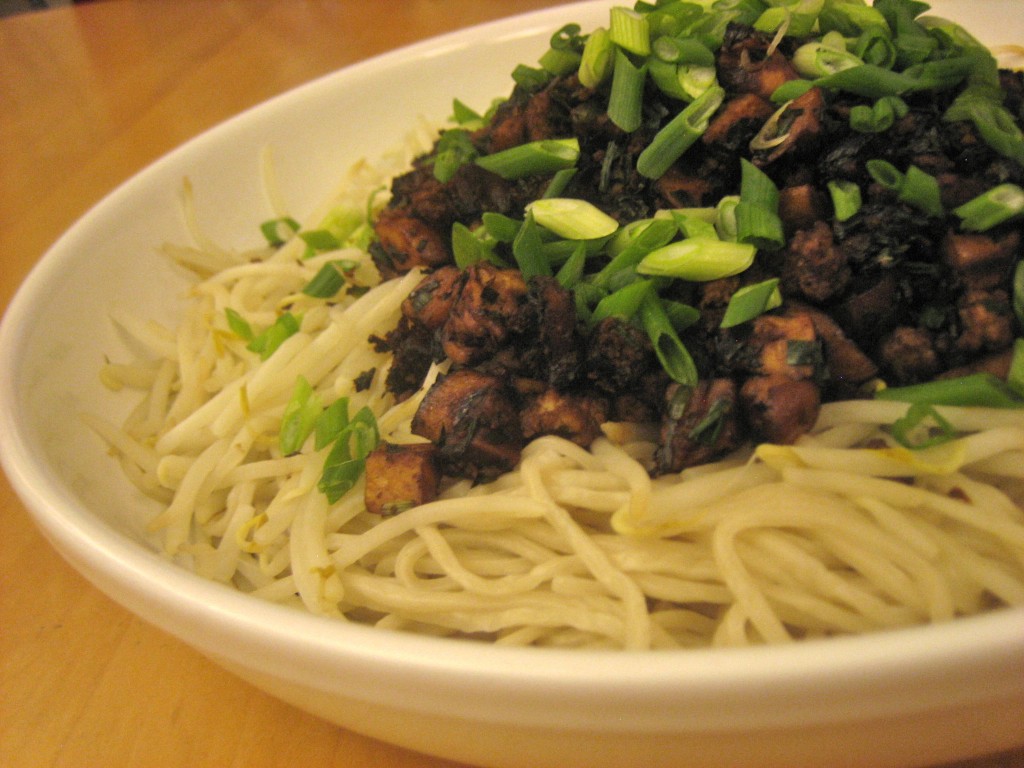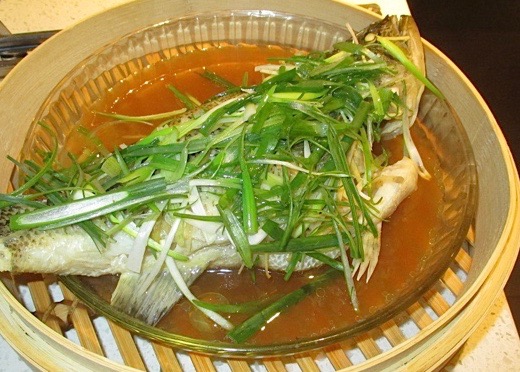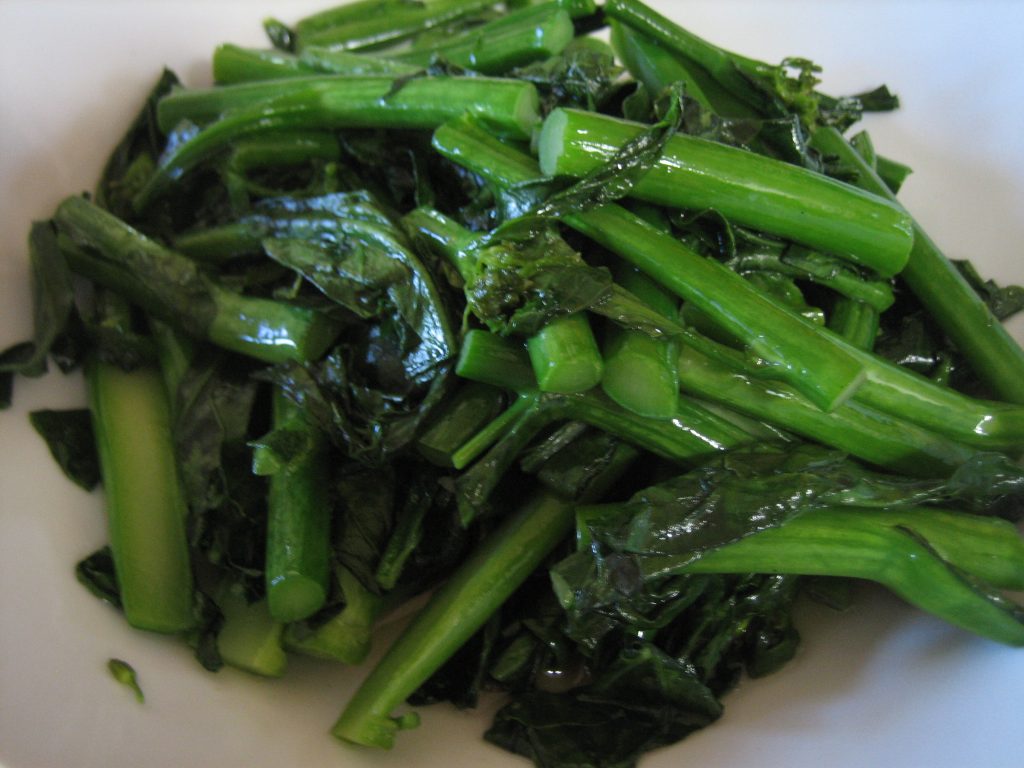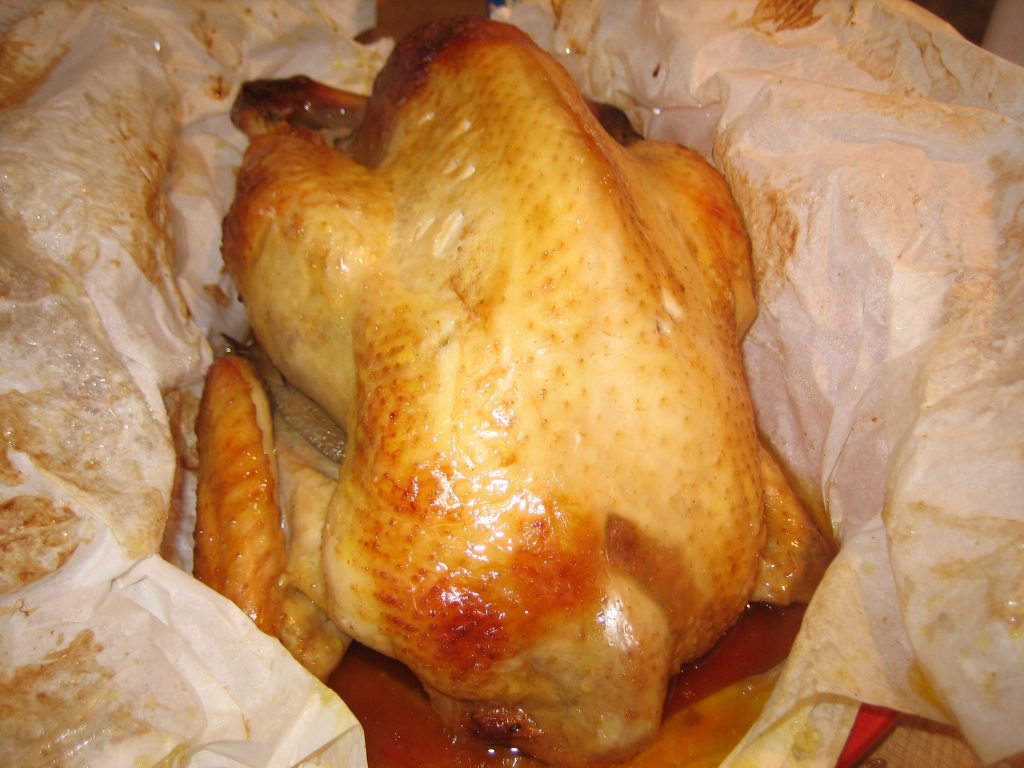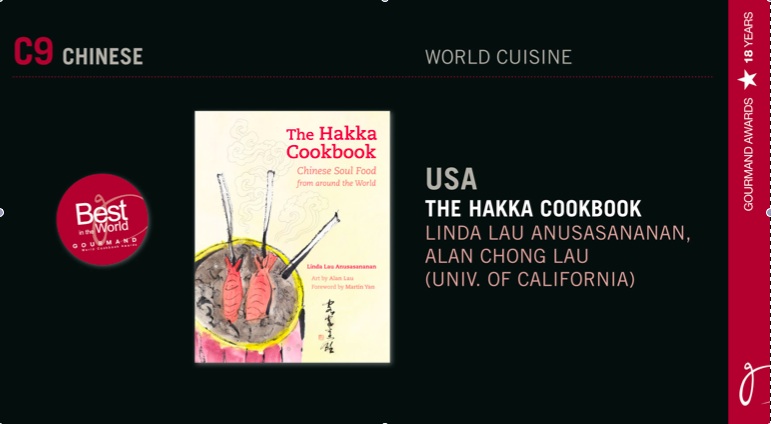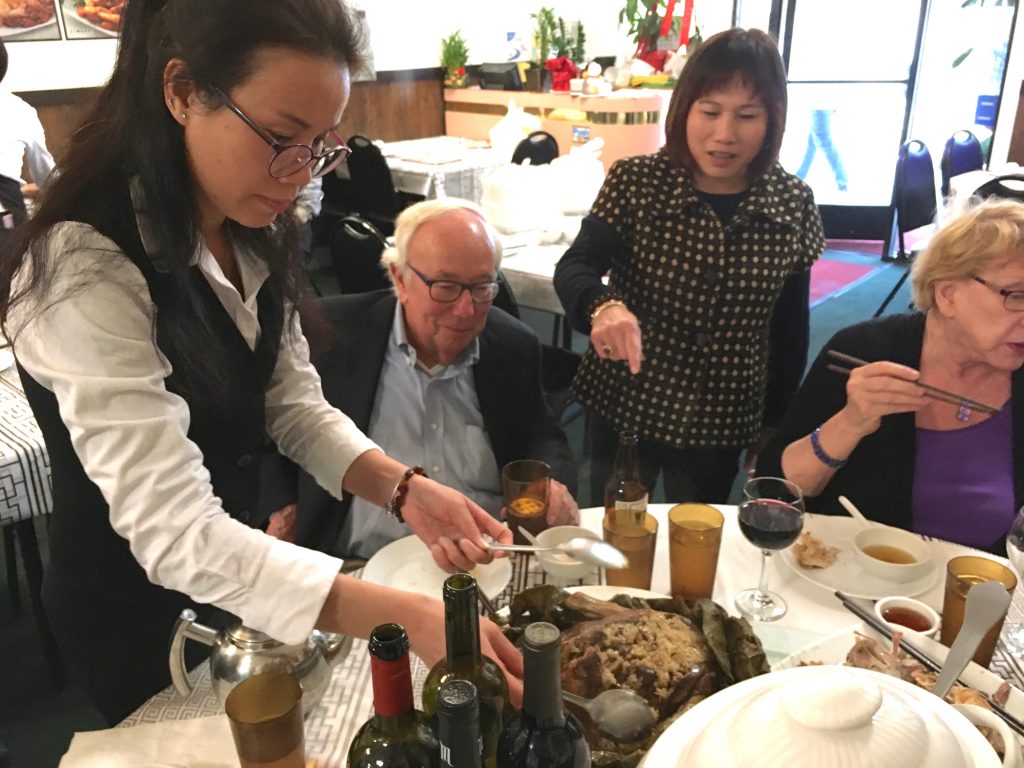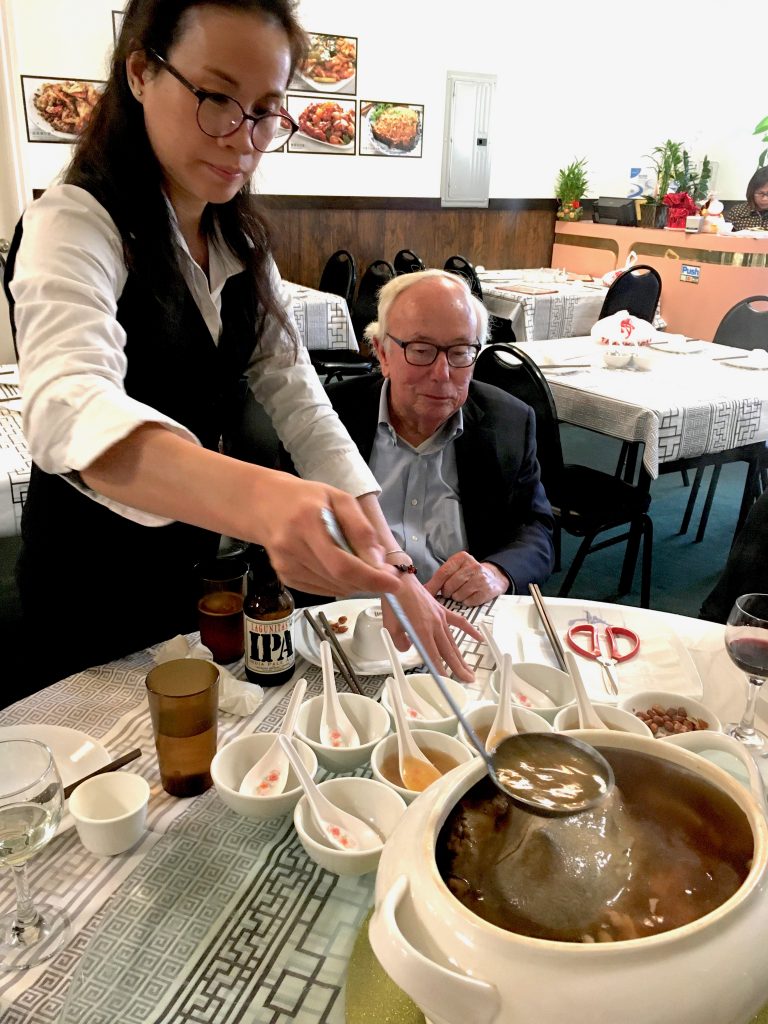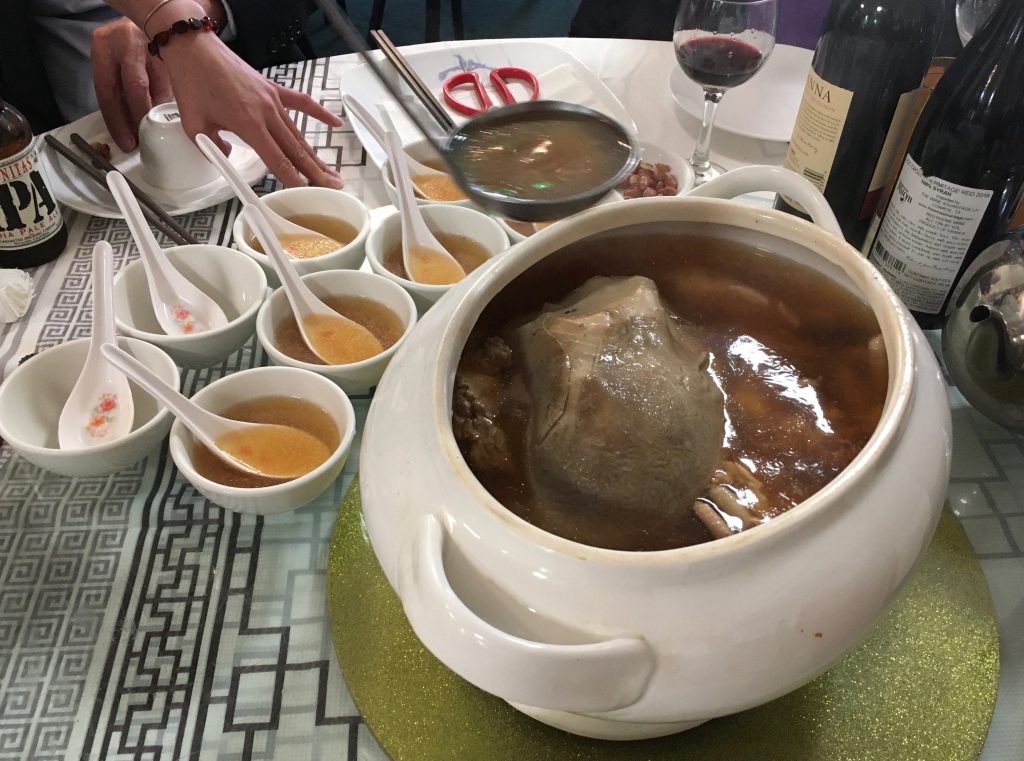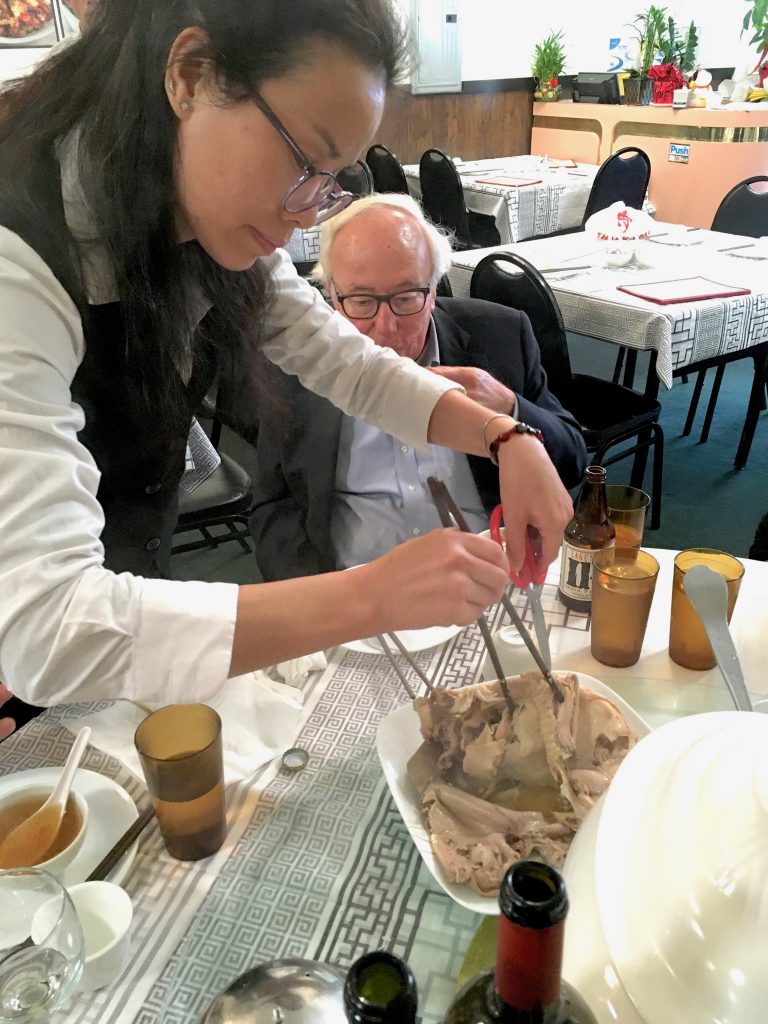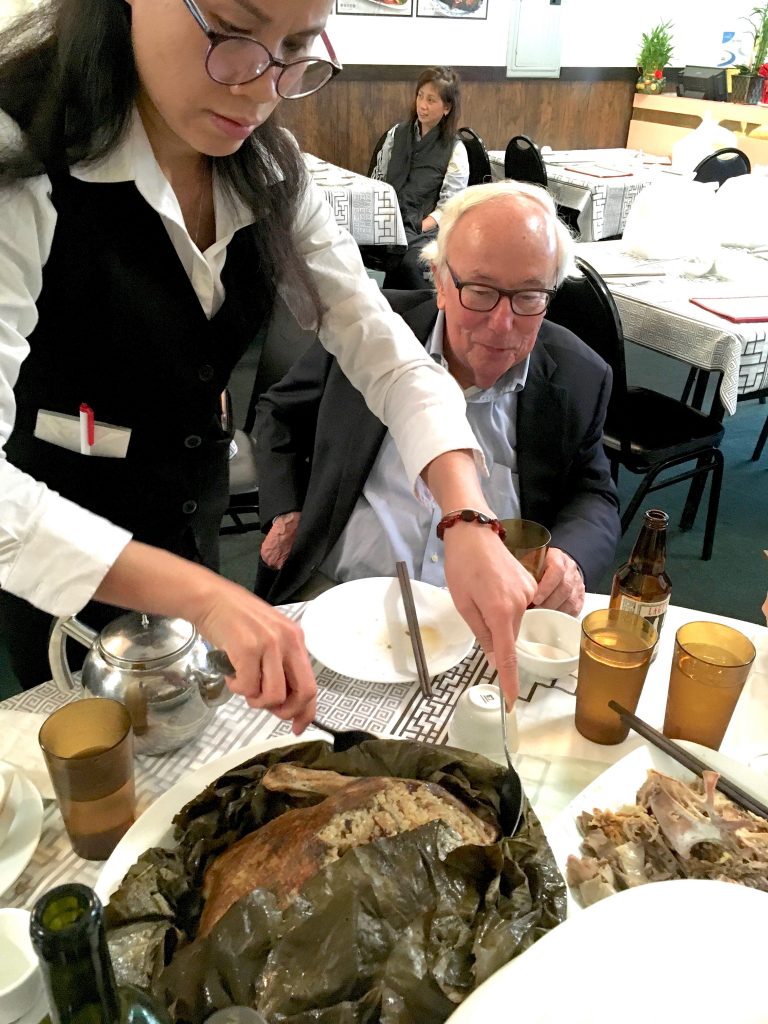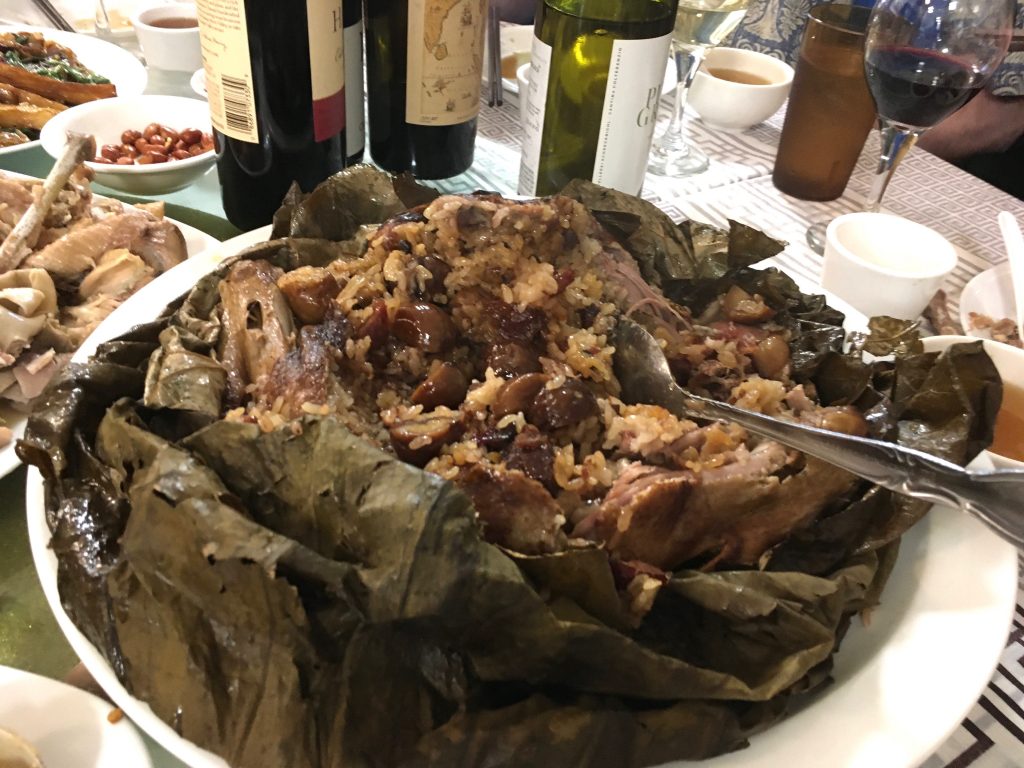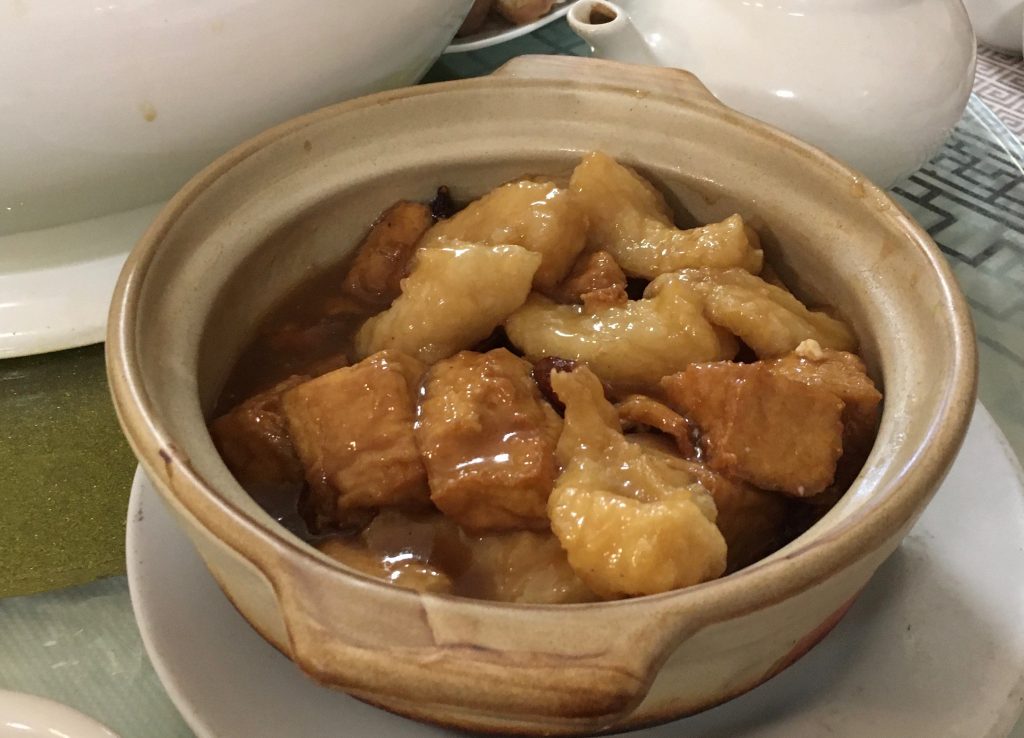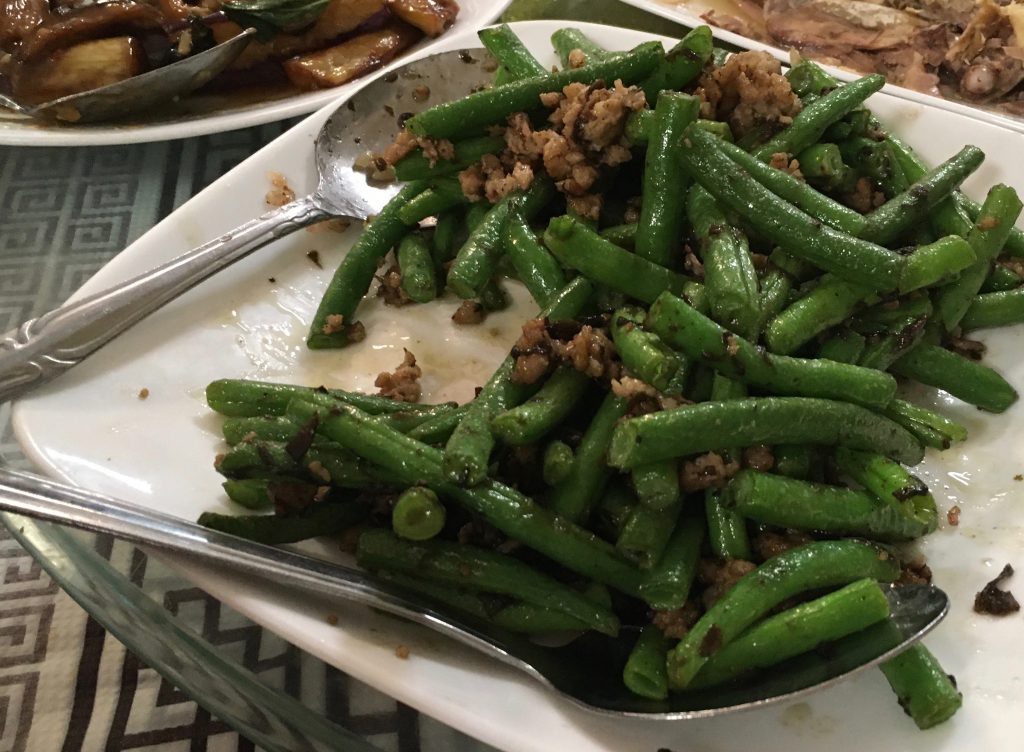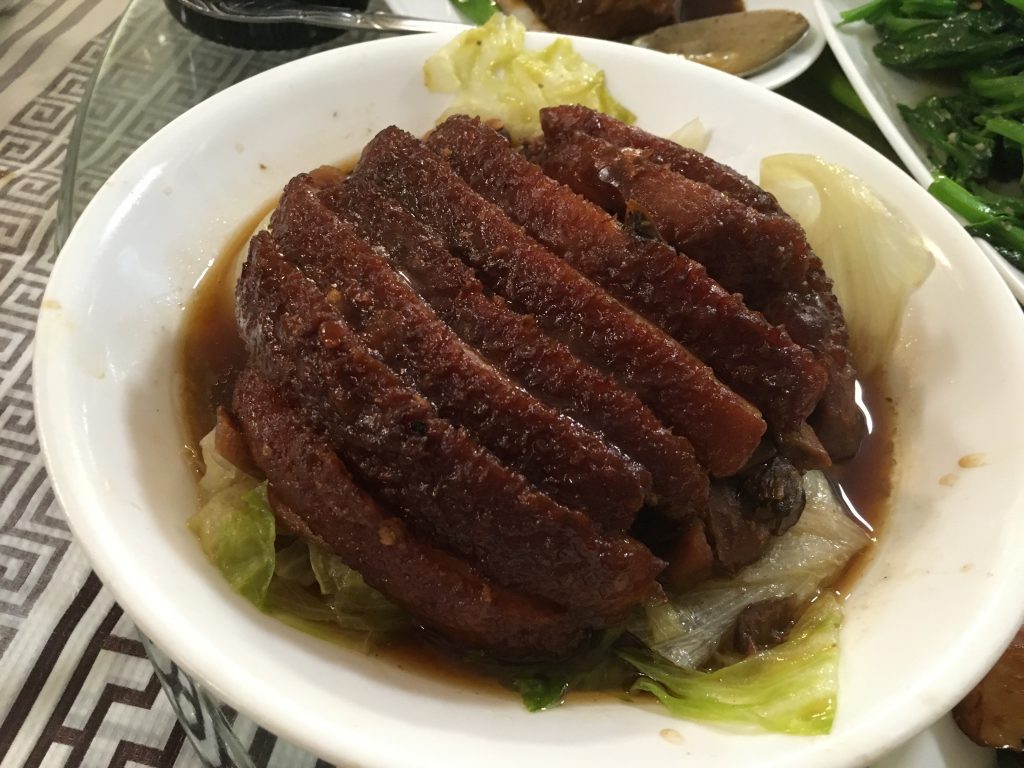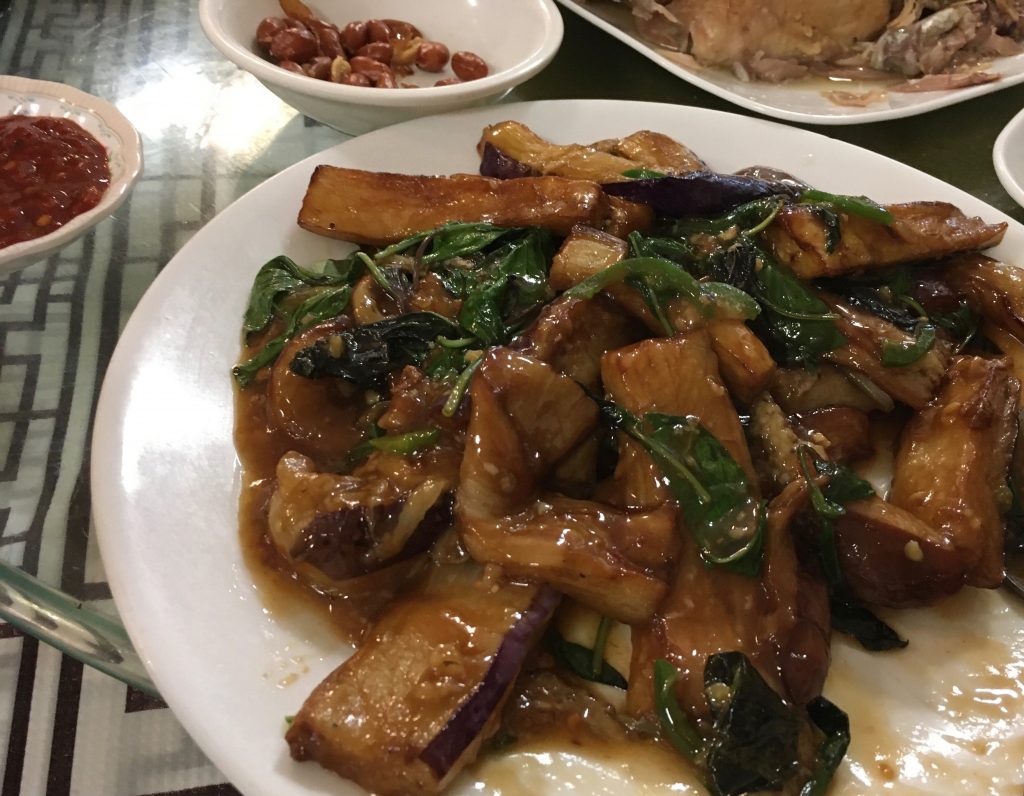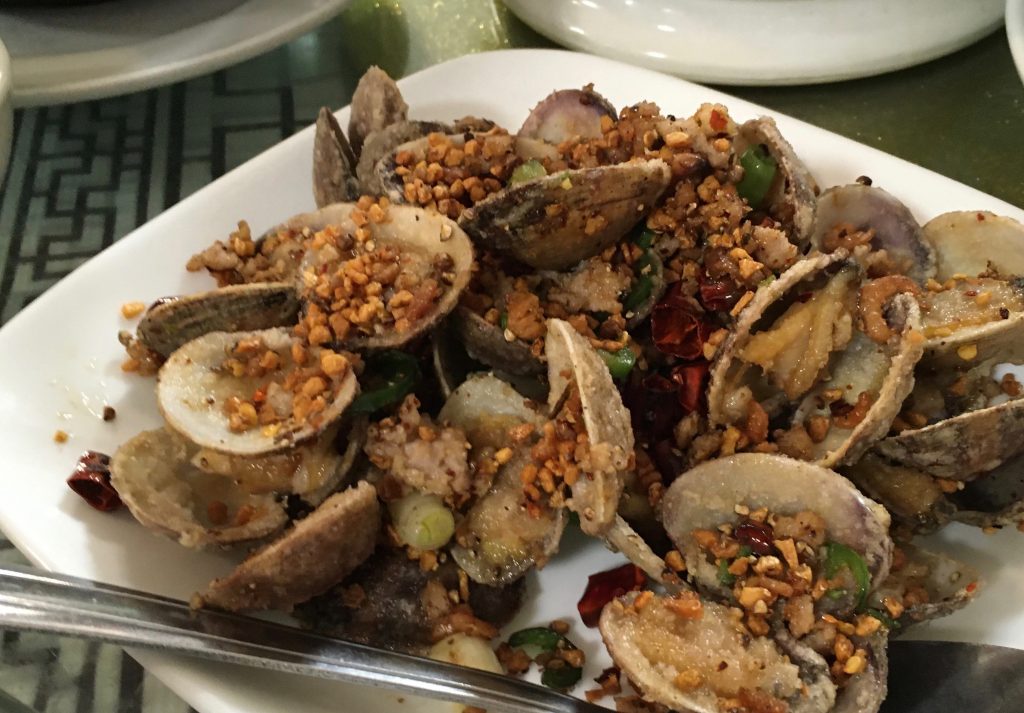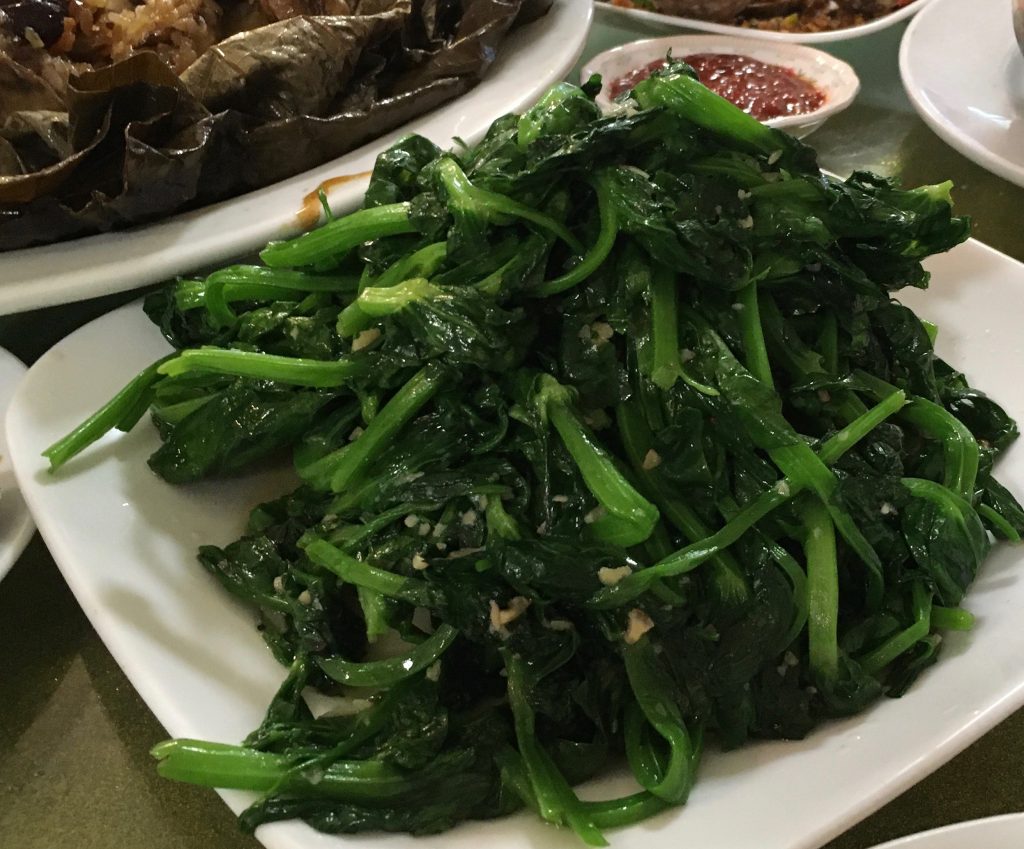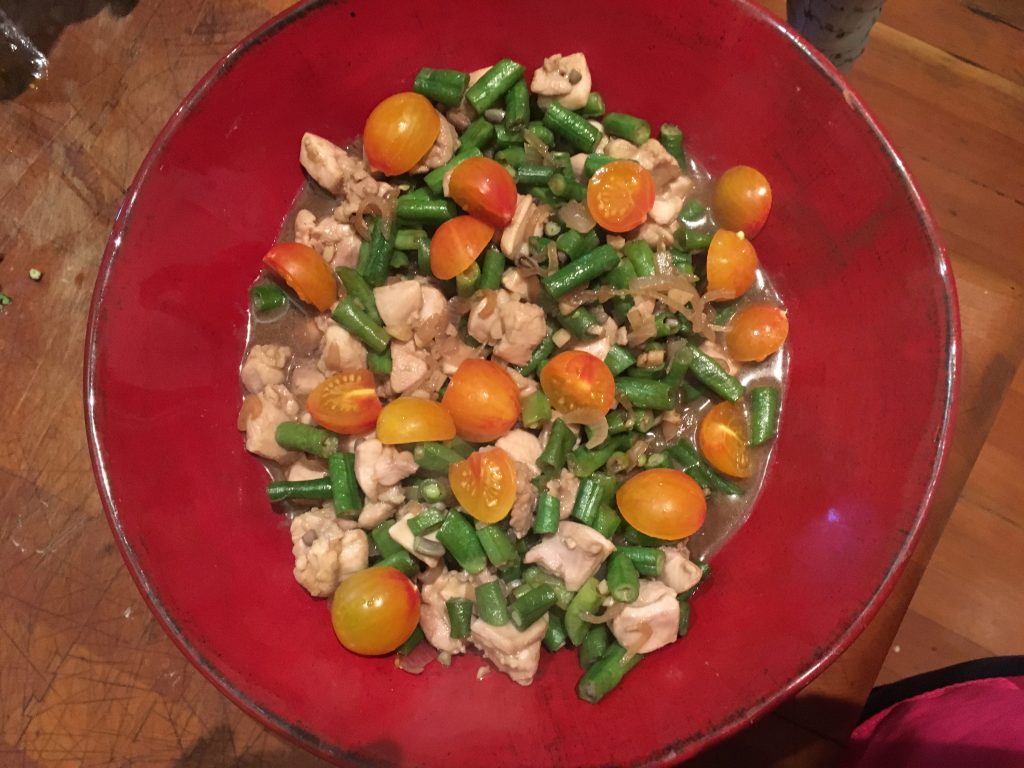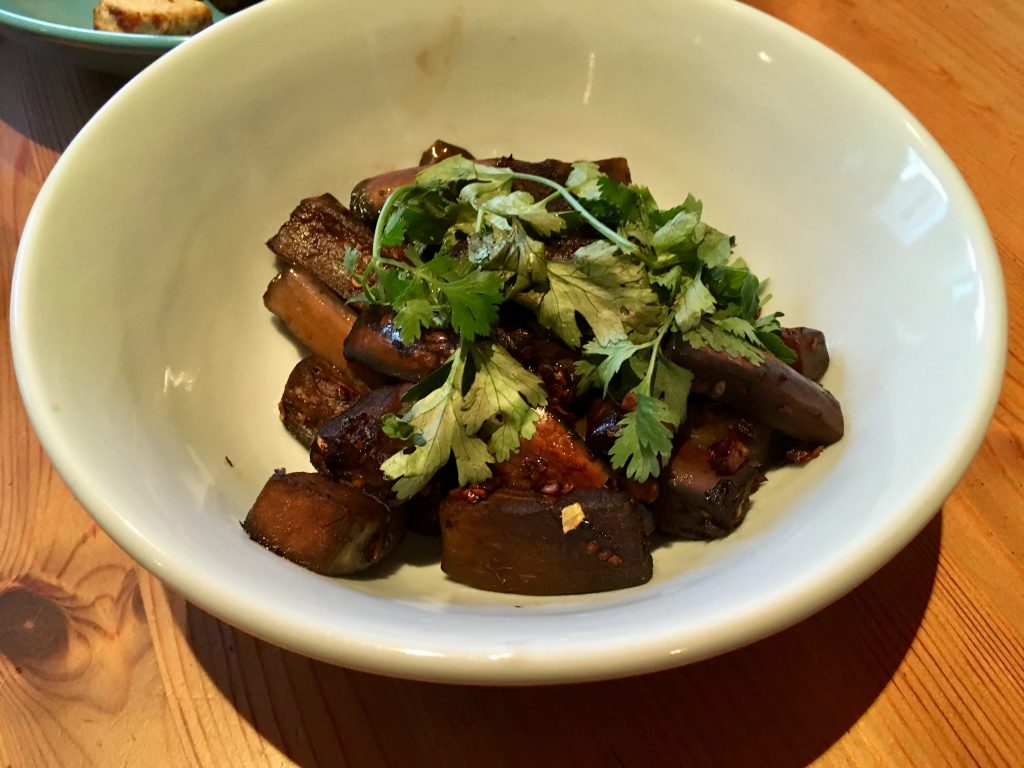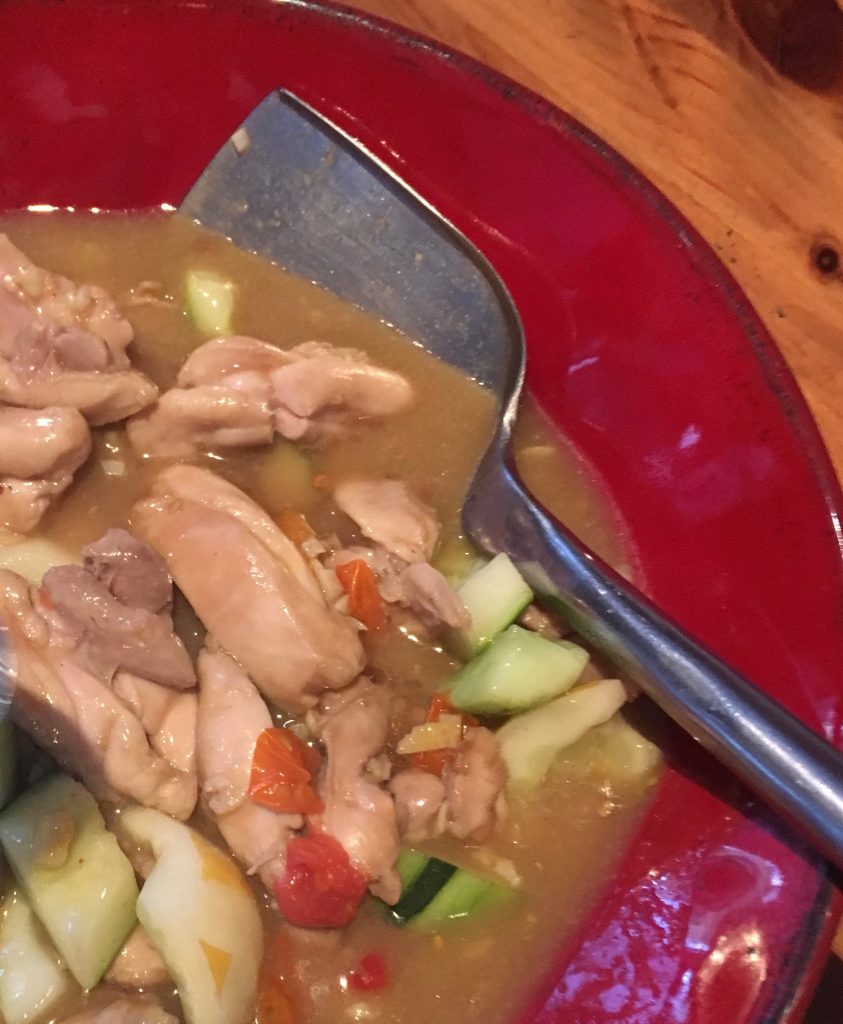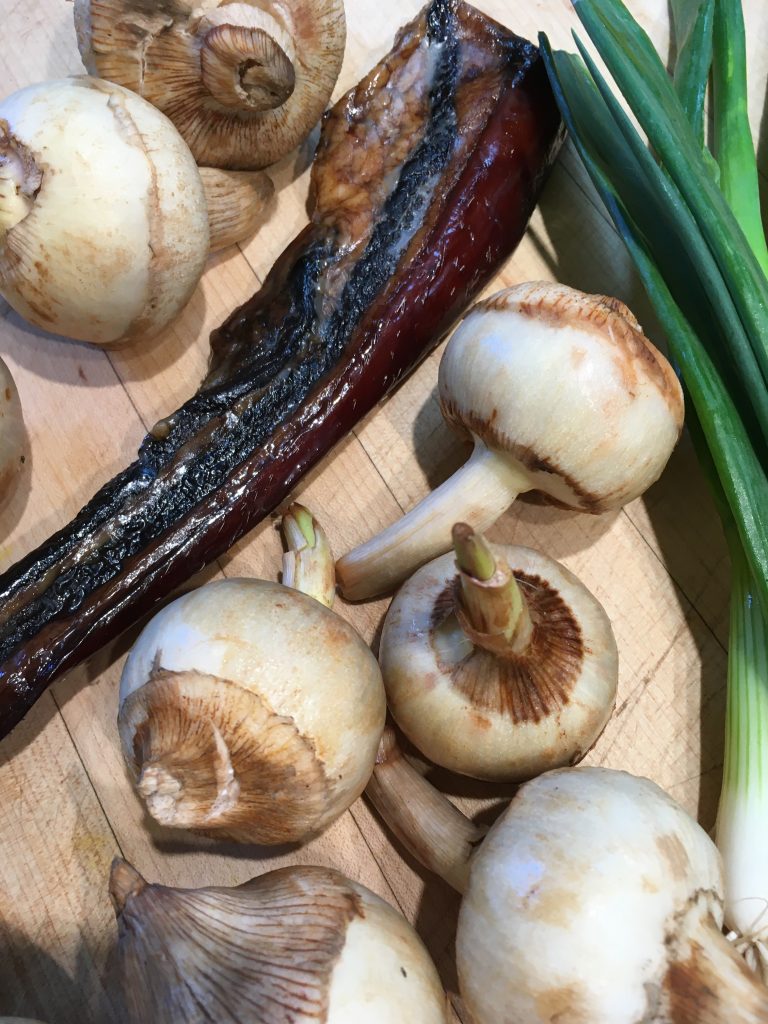
Khiung Hee Fat Choy! Happy Year of the Ox! For our Chinese New Year’s family feast, I cooked Five-Spice Potatoes and Chinese Bacon from The Hakka Cookbook. This Chinese potato stew comes from childhood memories of Popo, my grandmother and a master forager and cook.
Long ago on a drive through the flat rice fields near Oroville, California, Popo suddenly shouted to my father to stop the car. She had seen a stand of plants growing in an irrigation ditch along the road. Sensing wild potatoes grew underneath, she directed us to plunge our hands through the cold water into the muddy silt. We found plump bulbs attached to the stems and pulled them out.
That night Popo cooked the wild potatoes, better known as arrowhead (ci gu), with Chinese bacon to make a dark fragrant stew. The sweet spicy perfume of five-spice powder and smoky bacon filled the kitchen and our memories of that day.
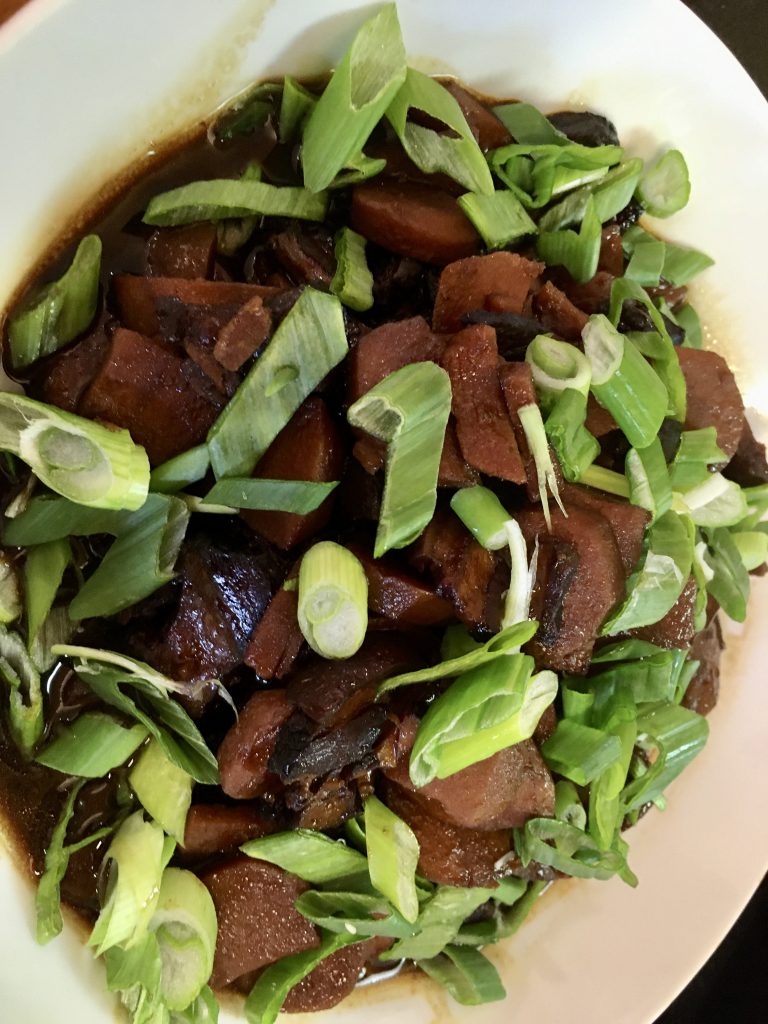
That was the only time I remember Popo using arrowhead for the Chinese potato stew. Often, she simply substituted thin-skinned potatoes from the supermarket. Look for arrowhead in Asian markets. Make sure the bulbs are firm and fresh. Or use potatoes as my grandmother did. Chinese bacon, dried soy sauce and five-spice marinated strips of pork belly, also contribute to the dark, fragrance of the stew. You’ll also find the dried smoked pork belly in Asian markets.
Her stew was relatively easy to cook. Simply slice the bacon, lightly brown, and add garlic and ginger. Add water, a little dark soy sauce, sugar, and five-spice powder and simmer, covered, until the bacon is almost tender. Then add peeled and sliced arrowhead and cover and simmer until tender. Serve with hot rice and enjoy.
For a detailed recipe, see page 19 of The Hakka Cookbook.

